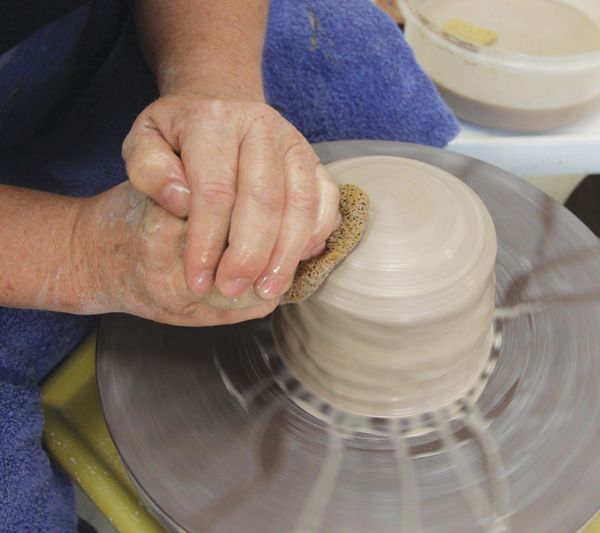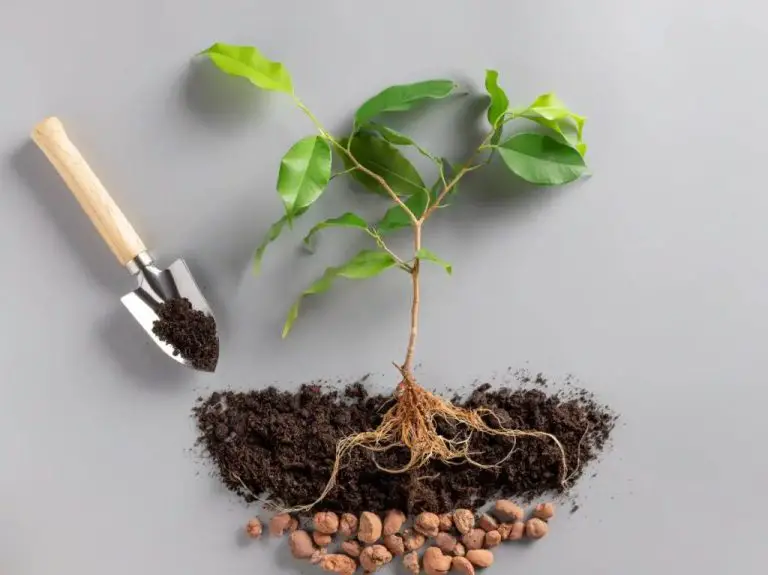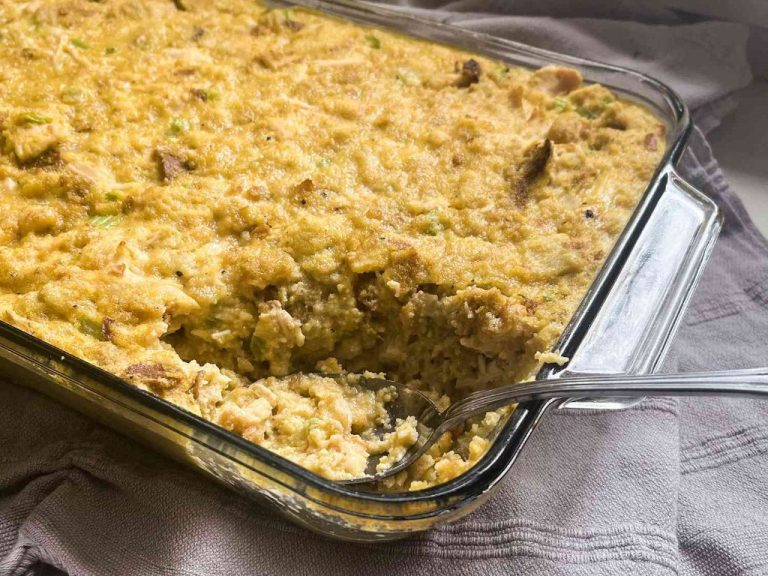Why Is Centering Your Clay On The Wheel Important?
Centering clay on the wheel refers to the process of getting the clay firmly centered and balanced on the spinning pottery wheel before beginning to shape it. This is an essential first step in throwing pottery on the wheel, as it allows for proper control and stability when manipulating the clay.
Without properly centered clay, the vessel will be off-balance and wobble as it spins, making it extremely difficult to shape and resulting in uneven, asymmetrical forms. Centering creates a solid foundation so the clay can be shaped and raised into an even, symmetrical vessel with consistent wall thickness. It is truly the most fundamental skill required when throwing on the wheel.
Better Control

Centered clay gives you greater control as you shape it. When the clay is centered on the wheel, the spinning motion evenly distributes the clay’s weight and makes the entire lump move in unison. This allows you to manipulate the clay more precisely. Your hands can shape and guide the clay without fighting against an off-center lump that wants to wobble and deform unpredictably. Centering aligns the clay into a balanced spinning mass so you have full control over every push, pull and carve as you form it into your desired piece.
Proper centering gives you a “feel” for the clay and helps train the muscle memory in your hands. With practice, a potter learns to center clay instinctively to achieve a flawlessly spinning mound ready for throwing. As craft website The Spruce Crafts notes, developing centering skills is a key foundation before attempting more complex pieces on the wheel. The sensitivity gained from centering clay allows advanced potters to execute their vision with utmost control and finesse.
Symmetry
Proper clay centering results in more symmetrical pieces. As you shape the clay on the wheel, centering allows you to evenly distribute the clay and create uniform walls and dimensions (
Consistent Walls
Centering allows you to shape walls and bases evenly. When clay is centered, the wheel head rotates symmetrically and provides the thrower with a balanced canvas to work on. This stability allows the clay walls to be shaped at an even thickness from top to bottom.
As Reddit user claymaker_1 explains, “A good thickness to me would be the width of your fingernail. (side-length)” (source). Keeping walls an even width is easier when the clay is properly centered.
YouTube channel Clayer Demonstrations warns that having uneven wall thickness can lead to cracks and collapses during drying and firing. Centering ensures the walls maintain consistency for better structural integrity (source).
Prevent Collapse
Well-centered clay is stable and resists slumping or collapse. Centering eliminates air pockets and evenly distributes the mass, creating a solid foundation. According to the Pottery Crafters article “11 Problems Centering Clay And Easy Ways To Fix Them,” pushing out air bubbles while centering “will prevent air or extra water from getting under your clay while centering.” This stability allows you to open up the walls without the clay becoming distorted or collapsing under its own weight.
As noted in a Ceramic Arts Daily forum discussion titled “Clay Becomes Off-Center When Opening,” centering is key for opening up taller forms: “If the clay is off-center when you start to pull up the walls, they will be uneven in thickness and prone to collapse.” Proper centering lends uniformity to the clay so walls maintain an even thickness and are less likely to fall.
In a Reddit post in r/Pottery about trouble centering, a commenter advised the original poster to “Push down with your right hand and keep the clay from moving too far outwards with your left. After a while of maneuvering the clay back and centering it, it should build enough stability not to collapse when opening.” This highlights the direct relationship between solid centering technique and avoiding collapse issues.
Efficient Shaping
Properly centering your clay on the pottery wheel right from the start results in less re-centering needed as you shape your piece. If you don’t center well initially, the clay can become lopsided or uneven as you pull up the walls. This requires repeatedly re-centering to fix the wobble and asymmetry. According to Rachel DeBarros, “Epoxy clay is popular for sculpting because it can be easily shaped and molded, adheres well to various surfaces, and can be sanded, carved, or drilled once cured.” (https://racheldebarros.com/ultimate-guide-to-the-best-types-of-clay-for-sculpting/). Proper centering from the beginning means you can focus on shaping the vessel or sculpture without interruptions to recentering, saving time and effort.
Smooth Spinning
When your clay is centered properly on the wheel, it will spin smoothly and evenly without wobbling from side to side. Centering allows the entire lump of clay to rotate at the same speed. An off-center lump will tend to spin faster on one side and slower on the other, causing an uneven and bumpy rotation.
Smooth, even spinning is important for a few reasons. First, it allows you to shape and mold the clay more easily since the clay stays stable as it turns. Any warping or wobbling makes it harder to maintain the form you want. Second, smooth spinning results in a more symmetrical and consistent product. The clay walls will be evenly thick all around rather than thicker in some spots and thinner in others. Finally, smooth spinning produces a higher quality surface finish. The clay will not get distorted or warped as it turns. The result is a smooth, polished look when done.
Decorating Ease
One of the key benefits of properly centered clay is that it makes the piece much easier to decorate consistently. When a piece is centered, the walls are even and the rotational axis is aligned. This symmetry allows the decorator to apply designs, patterns, carvings, or other embellishments with precision. For example, when incising lines or geometric patterns, the decorator can mark guidelines and have confidence they will be straight and uniform on a centered piece. Any warping or lopsidedness caused by imperfect centering makes it a challenge to decorate with consistency. Having centered clay gives the artist reliable dimensions and alignment to work from when decorating.
As this source explains, “The most important thing about centering is that your pot is centered before moving on to shaping and decorating. If you don’t center properly at the start, the rest of the process will be frustrating and the final product will show the flaws.” Proper centering is the foundation that makes the rest of the creative process easier and allows for a more polished final product when it comes to decoration and embellishment. (Source)
Trimming
Trimming a pot is the process of refining its shape and form after it has been thrown on the wheel and allowed to dry to a leather-hard state. Centering your clay properly on the wheel is crucial for efficient and even trimming. When a piece is well-centered, the walls maintain an equal thickness all around the piece. This allows the potter to trim the foot, refine the rim, and accentuate the form with greater control and precision.
With an off-centered piece, the walls will have uneven thicknesses. As you trim into the foot, you may cut through the thinner walls or have difficulty making the foot flat and smooth. Trimming the rim on an uneven piece is also much more challenging, often resulting in a wavy edge. Overall, it takes significantly more effort to trim a lopsided piece into the desired shape. The finished pot will lack symmetry and balance.
By properly centering the clay at the outset, trimming can be a faster and more predictable process. The centered orientation gives the potter full control to refine the piece into the ideal form. With wall thicknesses uniform all around, trimming tools can carve away excess clay and accentuate the intended shape cleanly and efficiently. The foot, walls, and rim will meet at smooth beveled edges, showcasing quality craftsmanship.
In summary, centering is a critical first step for trimming pottery successfully. Taking the time to center well enables much easier and more precise refinement of the final form. Trimming a centered piece yields a symmetrical and well-balanced finished product.
Source: https://www.reddit.com/r/Pottery/comments/jzaeig/centering_for_trimming/
Conclusion
In summary, properly centering your clay on the pottery wheel is crucial for several reasons. Centering allows you to have better control and symmetry in your finished pieces. It helps you achieve consistency in wall thickness and prevents your projects from collapsing or wobbling while throwing. Centering also makes the clay spinning smooth and efficient, enabling easier shaping. Finally, proper centering provides benefits when it comes to decorating, trimming, and glazing your pottery. Taking the time to correctly center your clay at the beginning ultimately leads to more professional results and higher quality pieces. The centering process may take practice, but it is an essential foundation skill every potter should strive to master.


